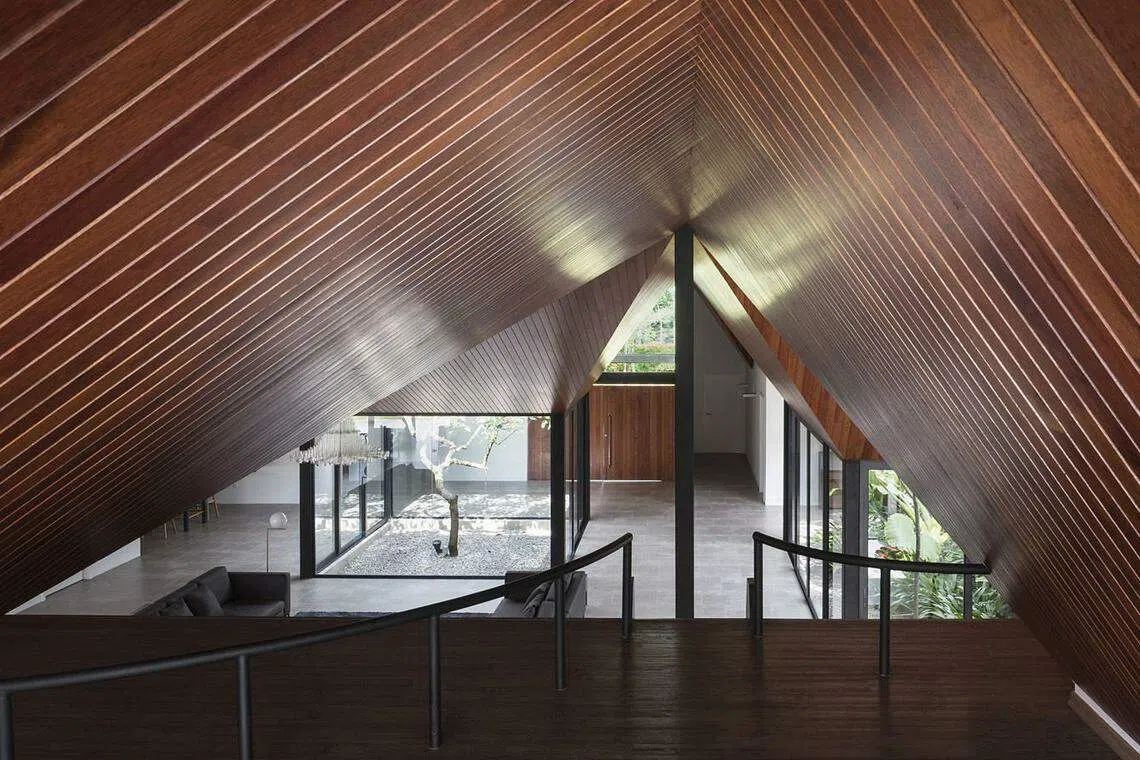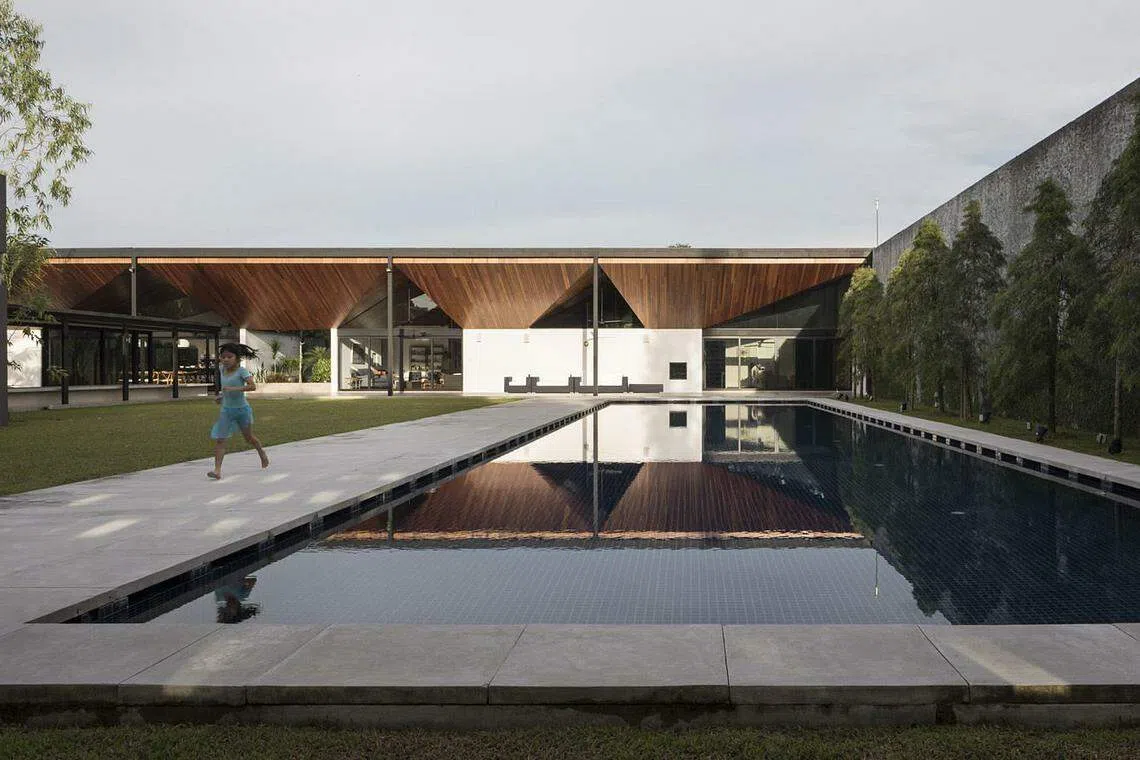Not your typical tropical home
A single-storey house in Johor Baru with multiple courtyards offers an unconventional way of living.

ARCHITECTS Alan Tay and Seetoh Kum Loon, partners at Formwerkz Architects, are no strangers to designing houses. But the houses, including several award-winning ones, have mostly been in Singapore and at least two storeys high.
So when their client commissioned them to design a home on his 45,000 sq ft land in Johor Baru, the architects jumped at the chance to re-invent the concept of a tropical home.
At two to three times the size of an average good class bungalow plot in Singapore, the architects literally had plenty of space to play with.
The family, a couple with three kids, were living in Singapore, but moved to Malaysia because they wanted more space and also to be away from the fast-paced city life.
As the family entertains a lot, they needed a home that could accommodate large parties. At the same time they also wanted privacy, and a safe compound for their three young children to play in.
Given the sheer size of the land, Formwerkz Architects suggested a single-storey house, instead of building upwards like they would do in Singapore. "When you live in a landed property, there is always the desire to be as close to the ground as possible, which is more achievable when there is only just one floor," explains Mr Tay.
Courtyard charms
The architects kept the entire massing simple. The 18,300 sq ft house is a large box with fort-like walls on the rectangular plot of land.
On the outside, the single-storey building doesn't draw as much attention as its neighbours, which is exactly what the architects wanted. The beauty of the home becomes clear when visitors enter the space, and for those who are lucky enough to get a bird's eye view from the outside.
Since the building is one large box, ensuring natural light and ventilation inside the house is a key consideration. "The owner doesn't like the heat, and there was the worry that the whole house would need to be fully air-conditioned, thereby increasing energy costs," says Mr Seetoh.
The architects found the solution: courtyards. But rather than just one big courtyard in the centre of the house, they designed several of varying sizes, dotted around the house. Some courtyards have ponds in them while others feature gravelled gardens.
Since the courtyard doors could be opened, there would always be a constant breeze flowing through the house. Ceiling fans help to circulate the air further. "We did something right with the introduction and placement of the multiple courtyards, since the family has not had the need to turn on their air-conditioning," adds Mr Seetoh.

It isn't just the multiple courtyards that make the home an unusual one. Within the house, there are the usual communal spaces such as the living and dining rooms, but rather than demarcating them with walls, these areas cluster around the courtyards as cloisters, thereby giving the project its nickname, Cloister House.
The architects initially had the idea to introduce skylight into the roof, but they changed their minds, as direct sunlight falling into the home during the mid-day isn't ideal. They had initially designed for the house to have conventional pitched roofs, but Mr Seetoh had the bright idea to flip the roof upside down, creating a series of funnel-like roofs, which are best seen from above.
The roofs now slope inwards in a reverse pitch fashion, chanelling light and rain into the courtyards. The roofs are inaccessible, save for the one in the movie room, where a flight of steps leads to the rooftop. On cool evenings, it becomes a chill-out spot, and on clear nights, there is the opportunity for some star-gazing.

Internally, the reverse pitched roofs have created an undulating ceiling, which never fails to be a talking point. To give warmth to the home, the multi-faceted ceiling is made out of strips of chengal wood, which were assembled piece by piece by a craftsman who took 14 months to complete the job.
The unusual ceiling can be seen from a distance through a glass strip in the building facade.

Bedrooms with views
The ceilings vary in height, but above the kids' playroom, it is high enough for the architects to create a tent-like space, where the kids can climb up to, and look down onto the rest of the house.

There are guest rooms in the building, but the family's own bedrooms are in an annexe block. There is another sitting area in this block and the bedrooms look out to either the garden or the lap pool.

Mr Seetoh says the fun part about this project is that, "this isn't your typical house, and a lot of ideas came to us when we were building the physical model."
For their efforts, Cloister House was named Design of the Year, at the President*s Design Award 2020. The jury liked the architects' reinterpretation of a tropical courtyard house.
Mr Tay acknowledges that it is a challenge building a single-storey house in land-scarce Singapore. He says: "Cloister House can start a conversation in Singapore regarding the creative use of building envelope control or the setbacks between a house and its surroundings. There will be many more opportunities for single-storey houses to be built if we can look at density differently."
Decoding Asia newsletter: your guide to navigating Asia in a new global order. Sign up here to get Decoding Asia newsletter. Delivered to your inbox. Free.
Copyright SPH Media. All rights reserved.




